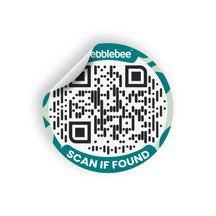Tracking technology is fairly widespread. But where and how did it start? How has it evolved over time? Learn more about this useful technology and its history.
Every day, millions of people rely on the ancient practice of celestial navigation to find their way through the world. These people aren't walking around with a sextant in their pocket though. They're using their cellphones.
Tracking technology has come a long way from the navigational tools explorers and pirates used to sail around the globe. Modern tools and tracking devices don't all rely on the stars, but they do use satellites high above us in space to tell us where things are.
Early Tracking Technology
Humans have been using tracking technology for as long as there have been humans. Early humans found food and shelter by following the footsteps of prey animals or other humans. People have been navigating for so long the history doesn't have a clear beginning.
Evidence of early technology for navigation is plentiful. There are ancient cave paintings of maps all around the world, as well as a 3,000-year-old Babylonian clay tablet housed in the British Museum. However, a map is only useful if you know where you are in relation to where you're going.
Compasses and sextants were an early solution to this problem.
Compasses
Historians agree that the first compasses were created in 11th century China. Compasses use the earth's magnetic field to show the user which direction is North. They were useful because they didn't rely on landmarks or the sky.
Compass technology has evolved since then, but the basic principle is the same. Early users would float a magnetized needle attached to cork in water. When the needle settled, it would point North.
Later, people suspended magnetized needles over charts showing the cardinal directions. The more scientists learn about the earth's magnetic field, the more sophisticated compasses get.
Sextants
Sextants were a common navigational tool for sailors in the 18th century. They are a device that measures the distance between the horizon and specific stars (or other heavenly bodies).
Without landmarks on the open seas, sailors had to use the sky to figure out where they were and make sure they were heading in the right direction. Unlike compasses, sextants weren't reliable in bad weather or when the sky was overcast.
Both compasses and sextants are still used in naval navigation, mostly as a back-up for more recent technology.
How Satellites Changed Tracking Technology
By the 1960s, the way people travel had changed dramatically from the days of merchant ships on the high seas. Trains, planes, and cars played a bigger part in daily life and maps were more detailed and accurate.
During the cold war, the United States started investigating how to make navigation even more accurate. Speedy and accurate navigation was important for military efforts, and radio systems weren't quite cutting it.
The beginning of the space program opened up a new possibility for navigation: satellites.
The Origin of GPS Tracking
The space race started when the Soviet Union launched their first Sputnik satellite in 1957. The United States quickly followed with the launch of the Explorer 1 in 1958.
Satellites were initially used for military tracking and surveillance. They could see and gather data from large areas of earth at a time, making them more efficient and accurate than tools on earth.
Satellites orbit the earth from various distances. Scientists equip them with various instruments to measure different kinds of data and serve different purposes.
In the 1970s, the United States started using a network of satellites to track military vehicles. By the 1980s, the technology was flourishing and the U.S. made it available to the public, known as GPS.
GPS stands for Global Positioning System because it is a system of satellite signals that locate the position of someone or something on the globe.
If you can find the positions of two things using this system, it is easy to plot the distance between them. This concept has been applied to some of the most common-place technologies we have today.
There is GPS tracking in airplanes, cars, and cellphones. Portable GPS receivers make it possible for a moving object to communicate with the satellite network. These days, we can use GPS to track almost anything.
GPS technology is always improving, but it isn't perfect yet. Sometimes, satellite signals can't penetrate objects (which is why your car's GPS might not work reliably inside a concrete parking garage for example). The technology also requires reliable maps to be useful.
Bluetooth Tracking
Bluetooth was introduced in the 1980s. It wasn't originally a tracking technology. The original use for this type of short-wave technology was to make wireless headsets.
The simplest way to understand Bluetooth technology is to think about it as two devices talking to each other using radio waves. Headsets and headphones are a common application of the tech, but tracking devices have also taken advantage of it.
Bluetooth tracking devices use this communication to locate objects by sending signals between the device and a receiver. For example, if the tracking device is connected to your wallet and the receiver is an app on your smartphone, the waves between the device and your phone can lead you to your wallet.
The benefit of Bluetooth technology over GPS technology for tracking devices is that the signal for Bluetooth works better indoors. The disadvantage is that Bluetooth ranges can be as short as 10 meters (33 feet).
For both systems, if the batteries or power source for the receiver dies, the system falls apart. However, innovations in both technologies are happening every day. Companies are working to make tracking devices with battery lives up to twelve months long.
The future of tracking devices is sure to include improvements to existing technology and exciting technology we haven't even begun to think of yet.
Find the Right Tracking Technology
You might not need to circumnavigate the globe, but tracking technology can still make your life easier. Whether you need to track your wallet or your dog, there is a device that can help you find what you're looking for.






